 W
WThe Adams Site (15FU4) is a Mississippian culture archaeological site located near Hickman in Fulton County, Kentucky, on Bayou de Chien, a creek that drains into the nearby Mississippi River.
 W
WThe Archeological Society of Virginia is a non-profit organization that focuses on archaeological projects in Virginia for over 50 years. Members of the society have participated in hundreds of archeological excavations since its inception in 1940. They are made up of mostly amateur archaeologists, and they have strict policies against selling or purchasing artifacts. They publish a journal called the Quarterly Bulletin four times per year and maintain their headquarters at Kittiewan Plantation in Charles City County, VA.
 W
WThe Beaver Lake point is a projectile point of the Paleoindian period. Archaeologists have related this point to the Dalton Tradition and to the Simpson point. Beaver Lake points are lanceolate (leave-shaped), narrow, and side-notched. They are 4.1 to 5.1 cm long, 1.7 to 2.1 cm wide, and 0.4 to 0.5 cm thick. Beaver Lake points are found in the Ohio and Tennessee river valleys and to a lesser extend in adjacent areas and much of the Southeastern United States.
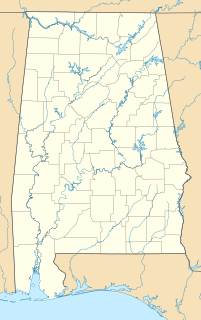 W
WThe Bessemer Site, also known as the Talley Mounds and the Jonesboro Mounds, is a South Appalachian Mississippian culture archaeological site located near the confluence of Halls Mill Creek and Valley Creek, west of downtown Bessemer in Jefferson County, Alabama. The site was ccupied in the early Mississippian period from about 1150 to 1250 CE.
 W
WThe Biggs Site (15Gp8), also known as the Portsmouth Earthworks Group C, is an Adena culture archaeological site located near South Shore in Greenup County, Kentucky. Group C was originally a large series of concentric circular embankments and ditches surrounding a central conical burial mound. It was part of a larger complex, the Portsmouth Earthworks located across the Ohio River, now mostly obliterated by agriculture and the developing city of Portsmouth, Ohio. The site was surveyed and mapped by E. G. Squier in 1847 for inclusion in the seminal archaeological and anthrolopological work Ancient Monuments of the Mississippi Valley.
 W
WBird stones are prehistoric, abstract stone carvings made by Native Americans. The artifacts were a common inclusion in graves and thought to have ceremonial importance. They are noted for their distinctive simplicity and beauty. They first appeared in the middle Archaic period around 5,000 years ago and continued into the early Woodland period to about 2,500 years before present.
 W
WThe Birnirk culture was a prehistoric Inuit culture of the north coast of Alaska, dating from the sixth century A.D. to the twelfth century A.D. The Birnirk culture first appeared on the American side of the Bering Strait, descending from the Old Bering Sea/Okvik culture and preceding the Thule culture; it is distinguished by its advanced harpoon and marine technology. A burial mound of the Birnirk culture was discovered in the town of Wales; 16 more have been found in Utqiagvik at the "Birnirk Site," which is now a National Historic Landmark. An ancient Birnirk village has been found at present-day Ukpiaġvik.
 W
WThe Briscoe Mounds, officially Illinois Archaeological Survey No. Wi-25, is an archaeological site in Channahon, Illinois. The mound site is located along the north edge of the Des Plaines River and is the largest mound site in northern Illinois.
 W
WSS Copenhagen is a shipwreck off the town of Lauderdale-by-the-Sea, Florida, United States. The single screw steamer was built in Sunderland, England in 1898, sinking in 1900. Located on the Pompano Dropoff reef south of Hillsboro Inlet, it became the fifth Florida Underwater Archaeological Preserve when it was dedicated in 1994. There is a plaque noting this distinction south of the wreck. This was followed on 31 May 2001 with its addition to the US National Register of Historic Places.
 W
WThe Cox Site (15WD107) is a Middle Fort Ancient culture archaeological site located in Woodford County, Kentucky, in the Bluegrass region of the state. The site is located on a large ridge and is approximately 65 metres (213 ft) by 60 metres (200 ft), although there may be other unexplored sections to the north.
 W
WThe Crippen Point site is a Coles Creek culture archaeological site located in Sharkey County, Mississippi. It is the archaeological type site of the Crippen Point phase for Late Coles Creek culture in the Lower Mississippi valley. The phase marks a significant change in the cultural history of the area. Population increased dramatically and there is strong evidence of a growing cultural and political complexity by this portion of the Coles Creek sequence. Although many of the classic traits of chiefdom societies are not yet manifested, by 1000 CE the formation of simple elite polities had begun. Sites for this phase are found in Arkansas, Louisiana, Oklahoma, Mississippi, and Texas. After the Crippen Point phase the Plaquemine culture period begins.
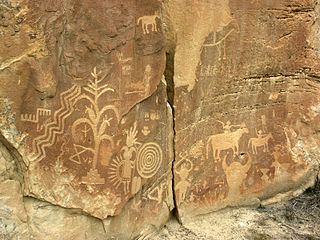 W
WThe Crow Canyon Archaeological District is located in the heart of the Dinétah region of the American Southwest in Rio Arriba and San Juan counties in New Mexico approximately 30 miles southeast of the city of Farmington. This region, known to be the ancestral homeland of the Navajo people, contains the most extensive collection of Navajo and Ancient Pueblo petroglyphs or rock art in the United States. Etched into rock panels on the lower southwest walls of the canyon, are petroglyphs or rock art, depicting what is believed to be ceremonial scenes and symbolic images that represent the stories, traditions and beliefs of the Navajo people. Dating back to the 16th, 17th, and 18th centuries, the petroglyphs have maintained their integrity despite the environmental conditions of the canyon and the effects of tourism. Among the ruins in the Crow Canyon Archaeological District there is also a cluster of Navajo defensive structures or pueblitos, which were built in the 18th century during periods of conflict with the Utes and the beginnings of Spanish Colonialism.
 W
WCueva Lucero is a cave and archeological site in the Guayabal barrio of the Juana Díaz municipality, in Puerto Rico. The cave includes more than 100 petroglyphs and pictographs "making it one of the best examples of aboriginal rock art in the Antilles." It has been known to archeologists since at least the early 1900s. Most of its images are zoomorphic. The site is known to locals including rockclimbers and spelunkers and there is some modern graffiti.
 W
WThe Denmark Mound Group or Denmark Site (40MD85) is a Mississippian culture archaeological site on a low bluff overlooking Big Black Creek, a tributary of the Hatchie River near Denmark in Madison County, Tennessee. The site features include a village with over 70 structures, 2 rectangular platform mounds and a small conical burial mound as well as possible evidence of a surrounding palisade. The site was added to the NRHP in 1992.
 W
WThe Duck River Cache was the archaeological discovery of 46 Mississippian culture artifacts by a worker on at the Link Farm Site in Middle Tennessee in December 1894.
 W
WThe Folsom Complex was a Paleo-Indian archaeological culture that occupied much of central North America. The term was first used in 1927 by Jesse Dade Figgins, director of the Colorado Museum of Natural History.
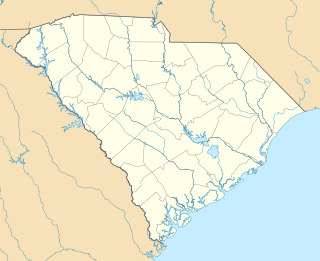 W
WIsaac Fripp House Ruins is a historic house ruin and archaeological site located on Saint Helena Island near Frogmore, Beaufort County, South Carolina. The ruins are located at Bay View overlooking the junction of Chowan Creek and the Beaufort River. The two-story, tabby house dates to the early- to mid-19th century. It is associated with Isaac Fripp, a planter of sea island cotton and other staples on St. Helena Island.
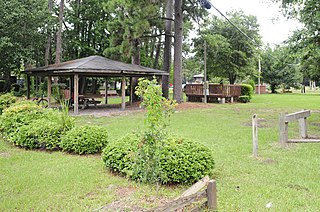 W
WThe Green is a historic open-space located on Saint Helena Island near Frogmore, Beaufort County, South Carolina. It is the site of community meetings, celebrations, and other gatherings. The Green was the site of the first Darrah Hall, an auditorium and community center built about 1885 by Penn School, and destroyed in 1893. Since that time the Green has continued to serve as a gathering place for the people of St. Helena Island. At the rear of The Green is the Knights of Wise Men Lodge.
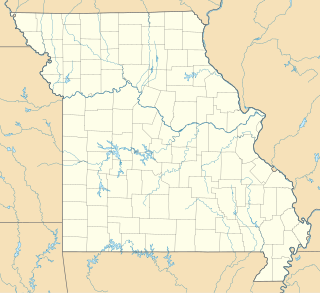 W
WThe Guthrie Archeological Site is a Native American archaeological site in Saline County, Missouri, located near the Missouri River east of the city of Miami, Missouri. The site was listed on the National Register of Historic Places in 1970.
 W
WThe Half Moon was a racing sailboat; it sank in 1930 near Miami, Florida, United States. The wreck is outside Bear Cut, which separates Virginia Key from Key Biscayne. Christened Germania, the racing yacht featured a chrome-nickel steel hull built by Krupp-Germania-Werft in 1908 in Kiel, Germany. During a visit to England in 1914, the yacht was seized as a 'war prize'. After changing owners several times, and surviving an especially-violent storm off Virginia, the yacht became a floating restaurant and dance hall off Miami. It sank near Key Biscayne in 1930. In 2000, the wreck became the seventh Florida Underwater Archaeological Preserve. In 2001, it was added to the US National Register of Historic Places.
 W
WThe Hansen Site (15GP14) is an archaeological site located near South Portsmouth in Greenup County, Kentucky, United States. The 6 hectare site is on a flood terrace of the Ohio River across from the mouth of the Scioto River, just upstream from the Lower Shawneetown site and the Old Fort Earthworks. The site was occupied several times over the centuries, with occupations dating from the Late Archaic, Middle Woodland, and Fort Ancient periods.
 W
WHungo Pavi is an Ancestral Puebloan great house and archaeological site located in Chaco Canyon, northwestern New Mexico, United States. A set of ruins located just 1 mile (2 km) from the ruins of Una Vida, Hungo Pavi measured 872 feet (266 m) in circumference. Initial explorations revealed 72 ground-level rooms, with structures reaching four stories in height. One large circular kiva has been identified. Its ruins now lie within Chaco Culture National Historical Park.
 W
WKin Kletso is a Chacoan Ancestral Pueblo great house and notable archaeological site located in Chaco Culture National Historical Park, 25 miles (40 km) southwest of Nageezi, New Mexico, United States. It was a medium-sized great house located 0.5 miles (0.8 km) west of Pueblo Bonito; it shows strong evidence of construction and occupation by Pueblo peoples who migrated to Chaco from the northern San Juan Basin in the time period of 1125 to 1200. From its masonry work, rectangular shape and design Kletso is identified as Pueblo III architecture by prominent Chaco archaeologists Stephen H. Lekson and Tom Windes. They also argue that this great house was only occupied by one or two households. Fagen writes that Kletso contained around 55 rooms, four ground-floor kivas, and a two-story cylindrical tower that may have functioned as a kiva or religious center. Evidence of an obsidian production industry were discovered here. The house was erected between 1125 and 1130.
 W
WThe Link Farm State Archaeological Area, also known as the Duck River Temple Mounds or Duck River Site, is a Mississippian culture archaeological site located at the confluence of the Duck and Buffalo Rivers south of Waverly in Humphreys County, Tennessee. The site is most widely known for the stone artifacts found during excavations in the late 19th century.
 W
WLittle Barnwell Island is a historic archeological site located near Port Royal, Beaufort County, South Carolina. The site consists of two shell and earth mounds located on the eastern side of Little Barnwell Island overlooking Whale Branch. The large of the two mounds is elliptical and once served as the base for a temple or ceremonial building. The mounds and building were probably constructed during the late Savannah II Period ca. A.D. 1500.
 W
WThe Lofthus is a Norwegian shipwreck near Boynton Beach, Florida, United States. Built in 1868 in Sunderland, England, the iron-hulled vessel was originally christened Cashmere and rigged as a three masted barque. After a career in the East Indian trade Cashmere was sold to a Norwegian firm, renamed Lofthus, and used in the American trade. It is located three-quarters of a mile north of Boynton Inlet, 175 yards offshore from Manalapan. On January 6, 2004, it was added to the U.S. National Register of Historic Places. It also became the eighth Florida Underwater Archaeological Preserve the same year.
 W
WLyman Lake petroglyphs is a site significant to North American Archaeology. Located in Arizona, United States, in Lyman Lake State Park, the site exhibits traditional rock art or petroglyphs.
 W
WThe Marshalltown trowel is a tool used by archaeologists in the United States of America and elsewhere.
 W
WMcCollum Mound, also known as Turkey Creek Mound and village, is a historic mound and village site located near Chester, Chester County, South Carolina. The site is one of less than two dozen mounds of aboriginal origin in the state of South Carolina. The mound was built in three, or possibly more, stages. The Turkey Creek mound and village were probably inhabited during the late prehistoric and early historic periods. The mound is located on the Broad River approximately 500–600 feet downstream from the McCollum Fish Weir.
 W
WMcElmo Phase refers to a period in the late 11th and early 12th centuries, when drastic changes in ceramics and masonry techniques in Chaco Canyon appeared. During this period the Ancestral Puebloans living in the canyon started using painted black-on-white pottery versus their standard grey ware, and the masonry and layout of great houses built during the McElmo phase, which was the last major construction era in the canyon, differ significantly from those built during the early parts of the Bonito Phase, which overlaps with the McElmo Phase. Archeologists initially suggested that the McElmo influence was brought to Chaco Canyon by immigrants from Mesa Verde, but subsequent research suggests that the developments were of local origin. Archeologist R. Gwinn Vivian notes, "The jury is still out on this question, a problem that poses intriguing possibilities for future work."
 W
WMile Canyon or more recently known as Eagle Nest Canyon is a tributary canyon of the Rio Grande entering on the north side of the river just downstream from Langtry, Texas. Mile Canyon received its name due to its length being approximately one mile long. In more recent years, this canyon is more commonly referred to as Eagle Nest Canyon, named after a nesting pair of golden eagles observed nearby. It has been an important area of many archaeological and geological expeditions over the past century.
 W
WThe Mound House is an archeological site located in Greene County, Illinois in the Illinois River floodplain. The site is a multicomponent site; however, the mounds were constructed during the Middle Woodland and are associated with the Havana Hopewell culture. The mound center has two identified mounds.
 W
WThe Muir Site, (15JS86), is an Early Fort Ancient culture archaeological site located in Jessamine County, Kentucky, in the Bluegrass region of the state. It was occupied from about 1010 to 1255 CE during the Osborne Phase of the local chronology. The site is near Jessamine Creek, on top of a broad ridge. Unlike later Fort Ancient villages, which are more compact, the Muir site structures were spread out over the ridge top. These structures were rectangular with single set post construction, as opposed to Mississippian style wall trench construction. Within the houses were 30 centimetres (12 in) to 50 centimetres (20 in) deep floor basins with centrally located hearths for cooking and heating. Pottery found at the Muir site was limestone-tempered, unlike some later Fort Ancient pottery which became mussel shell tempered after contact with Mississippian cultures.
 W
WThe New England Antiquities Research Association (NEARA) is a non-profit organization founded 1964. According to its website, it "is dedicated to a better understanding of our historic and prehistoric past through the study and preservation of New England's stone sites in their cultural context." The current president of NEARA is Terry J. Deveau.
 W
WPecked curvilinear nucleated, (PCN) in archaeology, is a form of prehistoric rock carving. The term was originally proposed by Teresa Miller and Reed Haslam in 1976 to describe a widespread type of rock carving in western North America. The form is characterized by a circular or oval groove element, which results in a raised center area. The form is quite prevalent in California and is applied to a number of Native American rock carving sites in this portion of the United States.
 W
WPeñasco Blanco is a Chacoan Ancestral Puebloan great house and notable archaeological site located in Chaco Canyon, a canyon in San Juan County, New Mexico, United States. The pueblo consists of an arc-shaped room block, part of an oval enclosing a plaza and great kiva, along with two great kivas outside the great house. The pueblo was built atop the canyon's southern rim to the northwest of the great houses in the main section of the canyon. The building was constructed in five distinct stages between AD 900 and 1125. A cliff painting nearby may record the sighting of a supernova on July 5, 1054 AD.
 W
WPueblo Alto is an Ancestral Puebloan great house and archaeological site located in Chaco Culture National Historical Park, northwestern New Mexico, United States. The complex, comprising 89 rooms in a single-story layout, is located on a mesa top near the middle of Chaco Canyon; 0.6 miles (1 km) from Pueblo Bonito, it was begun between AD 1020 and 1050. Its location made the community visible to most of the inhabitants of the San Juan Basin; indeed, it was only 2.3 miles (3.7 km) north of Tsin Kletsin, on the opposite side of the canyon. The community was the center of a bead- and turquoise-processing industry that influenced the development of all villages in the canyon; chert tool production was also common. It shares its mesa with another great house, Nuevo Alto, both of which are now protected within the borders of Chaco Culture National Historical Park. Storerooms at Pueblo Alto opened to the outside rather than into the interior rooms and there was a huge midden of pottery. This and chert found in the midden came mostly from the Chuska area 70 km (43 mi) to the west.
 W
WPueblo del Arroyo is an Ancestral Puebloan great house and archaeological site located in Chaco Culture National Historical Park, in New Mexico, United States.
 W
WSS Regina was a tanker built in Belfast in 1904 that sank on March 8, 1940, near Bradenton Beach, Florida, United States. Her wreck is located in the Gulf of Mexico, 75 yards off Bradenton Beach. In April 2005, the wreck became the tenth Florida Underwater Archaeological Preserve. On December 6, 2005, it was added to the U.S. National Register of Historic Places.
 W
WRichmond Plantation, also known as Girl Scout Plantation, is a national historic district located near Cordesville, Berkeley County, South Carolina. It was built about 1927, and includes a manor house and outbuildings constructed as a hunting lodge for George A. Ellis, a prominent New York financier and co-founder of E. F. Hutton & Co.
 W
WThe Ronald Watson Gravel Site (15BE249) is an archaeological site near Petersburg in Boone County, Kentucky, on an inside bend of a meander of the Ohio River. Excavations have determined that the site was occupied several times, during the Late Archaic, Middle Woodland, Late Woodland, and Middle Fort Ancient periods, although none of these are transitional occupations from one period to another. It is the best documented Middle Woodland site in the Northern Bluegrass region of Kentucky.
 W
WThe Rowlandton Mound Site (15MCN3) is a Mississippian culture archaeological site located in Paducah in McCracken County, Kentucky, on the edge of an old oxbow lake a little south of the Ohio River.
 W
WSams Plantation Complex Tabby Ruins is a historic plantation complex and archaeological site located at Frogmore, Beaufort County, South Carolina. The site, possibly built upon and occupied well before 1783. It includes the ruins and/or archaeological remains of at least 12 tabby structures. They include the main plantation house, a rectangular enclosure consisting of tabby walls, a large tabby kitchen, and five tabby slave quarters. Also on the property were a variety of tabby dependencies including a barn/stable, a smoke house or blade house, a well/dairy house, and a well. The property also includes the Sams family cemetery and Episcopal chapel enclosed by high tabby walls. Other structures include possibly an overseer's house, a granary/mill, and a tabby cotton house. During and subsequent to the American Civil War the Sams Tabby Complex was occupied by freedman. Following the Civil War the plantation house was destroyed by hurricanes.
 W
WThe San Felipe is a historic shipwreck near Islamorada, Florida, United States. It is located east of Lower Matecumbe Key and south of the wreck of the San Pedro. On August 11, 1994, it was added to the U.S. National Register of Historic Places.
 W
WSantee Indian Mound and Fort Watson is a historic archaeological site located near Summerton, Clarendon County, South Carolina. Santee Indian Mound was part of a Santee mound village complex; it was probably a burial and/or temple mound, likely constructed in some cultural period between 1200–1500.
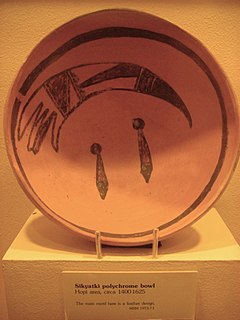 W
WSikyátki is an archeological site and former Hopi village spanning 40,000 to 60,000 square metres on the eastern side of First Mesa, in what is now Navajo County in the U.S. state of Arizona. The village was inhabited by Kokop clan of the Hopi from the 14th to the 17th century. Jesse Walter Fewkes led a Smithsonian Institution funded excavation of the site in 1895. During the excavations many well-preserved ceramic sherds were found. The designs on the sherds inspired the artist Nampeyo; sparking the Sikyátki revival in polychrome pottery.
 W
WThe Smith Rock Shelter is a natural limestone overhang in McKinney Falls State Park near Austin, Texas. The shelter is believed to have been used by Native Americans from 500 BCE until the 18th century. The last known occupants were related to the Tonkawa. It is accessible via the 0.8 mile round-trip Smith Rockshelter Trail in the park.
 W
WThe Spoonville site, also designated 20OT1, is a historic archeological site, located on the banks of the Grand River in Crockery Township, Ottawa County, Michigan, United States. It was placed on the National Register of Historic Places in 1973.
 W
WThe Swift Creek culture was a Middle Woodland period archaeological culture in the Southeastern Woodlands of North America, dating to around 100-800 CE. It occupied the areas now part of Georgia, Alabama, Florida, South Carolina, and Tennessee. In Florida, Swift Creek ceremonial practices and burial complexes are referred to technically as the Yent-Green Point complex. The Swift Creek culture was contemporaneous with and interacted with the Hopewell culture; Swift Creek is often described as "Hopewellian." The type site for the Swift Creek culture was the Swift Creek mound site, which was located in Bibb County, Georgia. The Leake Mounds are another significant Swift Creek Culture site in Georgia.
 W
WTabby is a type of concrete made by burning oyster shells to create lime, then mixing it with water, sand, ash and broken oyster shells. Tabby was used by early Spanish settlers in present-day North Carolina and Florida, then by British colonists primarily in coastal South Carolina and Georgia.
 W
WThe Taskigi Mound or Mound at Fort Toulouse – Fort Jackson Park (1EE1) is an archaeological site from the South Appalachian Mississippian Big Eddy phase. It is located on a 40 feet (12 m) bluff at the confluence of the Coosa and Tallapoosa rivers where they meet to form the Alabama River, near the town of Wetumpka in Elmore County, Alabama.
 W
WThe Thompson Site is a Fort Ancient culture archaeological site located near South Portsmouth in Greenup County, Kentucky, next to the Ohio River across from the mouth of the Scioto River. It was occupied during the Croghan Phase of the local chronology and was a contemporary of Baum Phase sites in the Scioto River valley.
 W
WThe Turk Site (15CE6) is a Mississippian culture archaeological site located near Bardwell in Carlisle County, Kentucky, on a bluff spur overlooking the Mississippi River floodplain.
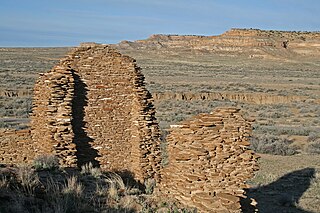 W
WUna Vida is an archaeological site located in Chaco Canyon, San Juan County, New Mexico, United States. According to tree rings surrounding the site, its construction began around 800 AD, at the same time as Pueblo Bonito, and it is one of the three earliest Chacoan Ancestral Puebloan great houses. Comprising at least two stories and 160 rooms, it shares an arc or D-shaped design with its contemporaries, Peñasco Blanco and Pueblo Bonito, but has a unique "dog leg" addition made necessary by topography. It is located in one of the canyon's major side drainages, near Gallo Wash, and was massively expanded after 930 AD.
 W
WUzita (Uçita) was the name of a 16th-century native chiefdom, its chief town and its chiefs. Part of the Safety Harbor culture, it was located in present-day Florida on the south side of Tampa Bay.
 W
WWijiji is an Ancestral Puebloan great house and archaeological site located in Chaco Canyon, in New Mexico, United States.